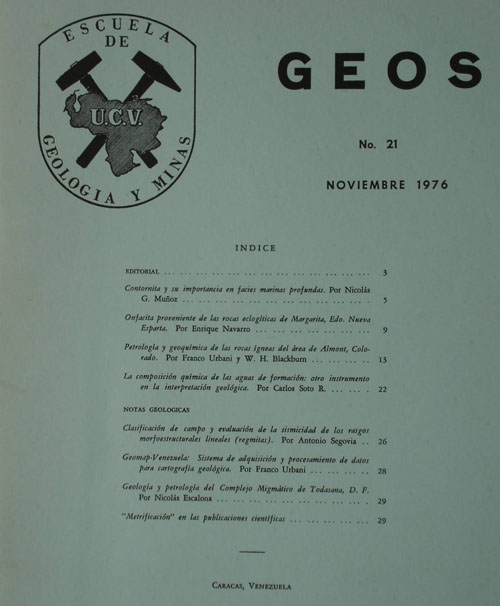Contornita y su importancia en facies marinas profundas
Resumen
El nombre contornita se introduce en la literatura geológica en Castellano para definir sedimentos que se consideran depositados por corrientes del fondo marino que siguen los contornos batimétricos y que han sido descubiertos recientemente por investigaciones oceanográficas. Contourite, el término inglés, fue propuesto originalmente por HEEZEN y HOLLISTER (1964) para sedimentos recientes y a pesar de su significado genético, se prevee un aumento de su uso en la nomenclatura de sedimentos antiguos. Las contornitas están formadas generalmente por material limoso y arcilloso (también por tamaño de arena fina) dispuesto en laminación paralela y a veces con laminación cruzada, buena selección de tamafio, y presentan estratificación muy delgada con sus contactos inferior y superior muy bien marcados. Aunque se suelen encontrar asociadas con las turbiditas, las contornitas pueden ser diferenciadas por su textura, estructuras sedimentarias y en muchos casos, por su composición. Se presenta un ejemplo de lo que se considera una contornita fósil del Paleógeno de la isla de Margarita, Venezuela. Finalmente, como el término contornita se considera muy atractivo, el autor lanza una advertencia para evitar un posible mal uso del mismo y reouerda la importancia de utilizar primero un nombre mas descriptivo, litológico o petrográfico, seguido luego del calificativo genético.
ABSTRACT
The new term contornita is introduced in the spanish geological literature for the english equivalent contourite, recently proposed by HEEZEN and HOLLISTER (1964) to distinguish a sediment deposited by the newly discovered ocean bottom contour following currents. In spite of its genetic meaning, specially useful for recent marine deposits, an increase of its usage to interpret ancient sediments is foreseen. The contourites are generally thinly bedded, silt and clay (also very fine sand-sized material), well sorted, exhibit parallel lamination (also foreset lamination), and display sharp bottom and upper bedding contacts. Though commonly associated with turbidites, the contourites can be differentiated from them by their texture. sedimentary structures, and also by composition. An example of a possible fossil contourite from the Paleogene of the Isla of Margarita, Venezuela, is presented. Finally, since contourite is a very appealing sediment name a warning is made to avoid a possible misuse of it from the very beginning, and the author stresses the importance of utilizing first a more descriptive term, lithologic or petrographic, foilowed then by the genetic name.

